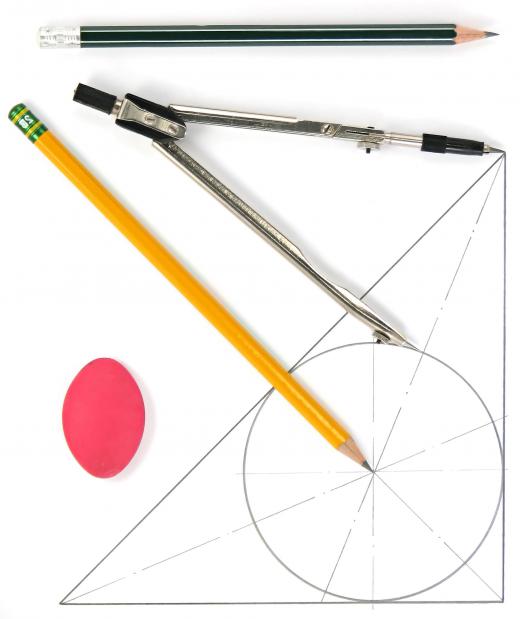Trammel points are pairs of clamp mounted compass points used on a woodworking beam compass. They may be clamped onto any suitable wooden beam or a steel ruler to mark off large arcs or transfer large diameter measurements. Trammel points may be simple devices consisting of no more than a small G clamp fitted with an awl point. They can also be fairly complex and include multiple adjustments and peripheral attachments such as pencil holders and ink ruling pens. Trammels designed for use with flat rulers are typically round in cross section with a slot and a screw down lock to hold the ruler firmly.
Normal scriber or pencil type compasses usually duplicate measurements and mark off arcs and circles in wood working. When these measurements or arcs become too large, these conventional instruments no longer suffice. A beam compass allows for the range of possible measurement to extend considerably while maintaining accuracy and control. Beam compasses consist of a pair of trammel points which serve as center point and circumference indicators. These are usually fairly simple C or G style clamps attached to a long, sharply pointed shaft.

To make a measurement, both trammel points are attached to the beam with the points facing in the same direction. The center point clamp is tightened securely on the beam, and the circumference point is moved down to the desired position and tightened. The beam can then be swung through an arc scribing a visible reference mark. When transferring measurements, the compass is simply picked up and moved to the new position. Several beams can be used which afford an almost unlimited range of measurement.
There are several different types of trammel points with the clamp type being the most common. Some can be fairly complex, though, and include a range of extra accessories. These include circumference points with pencil attachments which don't require a physical score mark to be made in the material surface. Older style ink ruling pens are also found in older trammel point sets. Some trammel points include knife fittings which allow a blade to be clamped into the circumference pointer to cut discs from wood or drywall material.
Trammels may also be used with flat steel or wood rulers which afford a built-in measuring capacity. These are generally tubular fittings with a slot through their center to accept the ruler. Ruler trammel points have a knurled lock nut on top of the cylinder that locks the ruler in place. Older trammel point sets are fairly heavily embellished with decorative engraving and ornamental finishes. They were often exquisitely machined pieces occupying a place of pride in their owner's collection.
